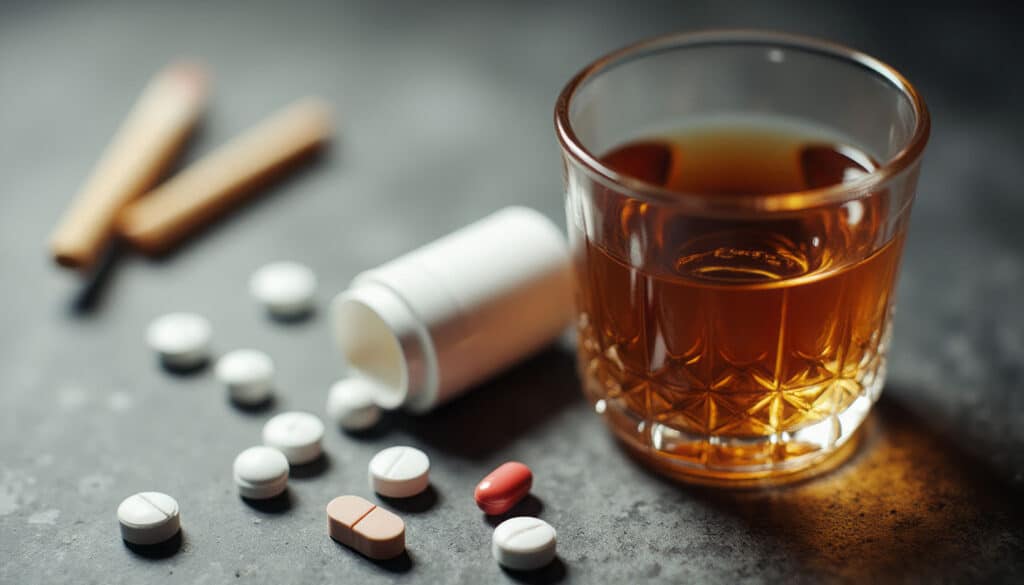Tesla drugs, also known as Tesla pills or Tesla ecstasy, are a relatively new brand of MDMA (3,4 methylenedioxy-methamphetamine) pills.
MDMA, also known as Ecstasy or Molly, is a synthetic drug that distorts a person’s mood and perception. Tesla pills are triangular-shaped and have a Tesla logo on one side, making them easily recognizable. These pills come in various colors, including pink, blue, white, orange, and brown, and are often marketed as “super strength” MDMA.
This article discusses everything you need to know about Tesla pills, including their short and long-term effects, withdrawal symptoms, and potency.
What Are Tesla Drugs? Appearance, Potency, and Origins

Tesla drugs are a brand of MDMA/ecstasy pills. It’s believed to have appeared in 2015 and is considered one of the most popular brands of MDMA. They’re triangular in shape and have the Tesla logo emblazoned on them—yes, the electric vehicle brand.
It goes without saying that Tesla pills aren’t produced by Tesla itself but rather by illegal drug manufacturers who use the brand’s logo to make the pills more recognizable and appealing to users.
According to reports, Tesla pills are more potent than regular “no label” MDMA due to their high purity. It contains up to 240 milligrams of MDMA per pill, which is nearly double the typical recreational dose (75 to 125 milligrams).
Due to Tesla being a luxury brand, people who use Tesla-branded MDMA believe that they’re safer than other MDMA brands. However, Tesla pills tend to contain ingredients that ‘boost’ their potency, like fentanyl.
For the uninitiated, fentanyl is an opioid similar to morphine but 50 to 100 times stronger. A few milligrams of fentanyl can easily result in a fatal overdose, which is why it’s often mixed with other substances to dilute its dangerous effects.
Tesla drugs are most commonly available in two colors: blue and orange. The blue pill tends to be thinner and contains a lower dose of MDMA, while the orange pill is thicker and contains a higher dose of MDMA.
Other colors exist, too, like pink, brown, and white, though their composition is unknown. It’s impossible to know the content of every Tesla pill because they aren’t regulated. This means that any manufacturer can produce it and sell it as their own.
Alongside fentanyl, Tesla pills have also been found to contain cocaine, ketamine, and heroin.

Short-Term Side Effects of Tesla Pills
People who use Tesla pills often experience greater feelings of euphoria than other MDMA pills.
When a person takes a Tesla pill, it triggers the release of ‘feel good’ chemicals like serotonin, dopamine, and norepinephrine. The rush of chemicals causes a ‘high’ that makes a person feel euphoric. The drug’s effect can last from 3 to 6 hours, though some report it lasting up to 8 hours.
Short-term effects of Tesla pills include:
- Dry mouth
- Irregular heartbeat (arrhythmia)
- Blurred vision
- Sweating
- Increased energy
- Muscle tension
- Increased alertness
- Reduced inhibitions
- Paranoia
- Dehydration
- Teeth clenching
- Euphoria
- Impulsiveness
- Restlessness
- Hallucinogenic effects
Long-Term Side Effects of Tesla Pills
Tesla pills are a Schedule I drug, meaning that it has a high potential for abuse. It belongs in the same category as LSD, heroin, and marijuana.
Repeated use can lead to significant changes in brain function. It can damage the brain’s serotonin system, which can impair mood regulation, memory, and cognitive abilities. This can result in long-term issues such as anxiety, depression, and difficulty concentrating.
Chronic users may also experience a decline in their ability to feel pleasure without the drug, a condition known as anhedonia. Anhedonia isn’t permanent but can take months, if not years, to treat.
Other long-term side effects include:
- Development of mental health disorders (anxiety and depression)
- Psychological dependency
- Insomnia
- Hyperthermia
- High blood pressure
- Heart failure
- Kidney damage
While it isn’t classified as addictive, Tesla pills can cause users to become psychologically dependent on their effects. This increases the risk of overdose due to tolerance or impurities in the drug.

Can Tesla Pills Cause Death?
According to research, nearly 40% of overdose deaths between 2000 to 2019 were associated with MDMA substance abuse.
Given that Tesla pills are among the more well-known ‘modern’ versions of the drug, it’s reasonable to assume that a notable portion of these overdose cases may involve Tesla pills. At the very least, one confirmed death has been directly linked to these pills.
In the UK, Tesla pills have become so notorious that several news stations have given official warnings to the public about the dangers of using MDMA in any form. Tesla pill use in the US isn’t heavily documented, but similarly branded pills are likely circulating as a club drug.
Tesla pills can cause death due to dehydration and/or overheating. Since it’s often taken by people at nightclubs, parties, and festivals, where intense physical activity, loud music, and high-energy environments are common, users may not drink enough water or may overexert themselves while under the influence.
MDMA can cause the body to overheat, especially in crowded or hot environments, leading to conditions like hyperthermia, which can be fatal if not treated quickly.
Dehydration is another risk, as users may not realize the need to hydrate properly. People who take Tesla pills and indeed any other sort of MDMA-brand drug are advised to drink around 250 to 500 ml of water to avoid these risks.
Drinking too much water can also be dangerous because it can result in dilutional hyponatremia, a condition wherein a person’s brain swells from excessive water consumption. People who take MDMA with alcohol are most at risk of this condition as they may not realize that they’re drinking an excessive amount of liquid.

What Are the Withdrawal Symptoms of Tesla Pills?
Withdrawal symptoms associated with long-term Tesla pill drug use use aren’t usually severe, but they can be uncomfortable.
Symptoms peak within a few days of quitting the drug and last for about one to two weeks. Psychological symptoms, like intense cravings, anxiety, and depression, may persist for weeks or even months.
Here are the common withdrawal symptoms of Tesla pills:
- Irritability
- Difficulty concentrating
- Insomnia
- Anxiety
- Depression
- Paranoia
- Memory fog
- Cravings
How Is Tesla Pill Addiction Treated?
Addiction treatment for Tesla pills involves medically-assisted detox, behavioral interventions like Cognitive Behavioral Therapy, and group support.
During medically-assisted detox, physicians prescribe antidepressants to help with some of the psychological symptoms of withdrawal.
MDMA withdrawal symptoms are rarely physical, so patients aren’t typically given methadone or similar medications that help with opioid withdrawal. Instead, professionals focus on managing the emotional and psychological effects through therapy and other interventions to help the brain recover from the depletion of serotonin caused by MDMA use.
Treatment can take anywhere from several weeks to several months, depending on the length of time taken.
FAQs
What is the difference between Tesla pills and other MDMA pills?
Can Tesla drugs cause permanent brain damage?
What happens if you overdose on Tesla pills?
What should I do if someone is overdosing on MDMA?
Are Tesla pills illegal?

Final Thoughts
Tesla drugs are a relatively new brand of MDMA. It has a high MDMA content, up to 240 grams per pill. It’s usually triangular in shape and comes in two primary colors: blue, the “weaker” version, and pink, the “stronger” version.
MDMA isn’t considered an addictive drug, but it can cause a person to become psychologically dependent on its euphoric effects.
If you or a person you love is struggling with MDMA use, we’re here to help. Through medically-assisted detox, therapies, and group support, we can guide you through the recovery process.
Published on: 2025-04-22
Updated on: 2025-04-22












